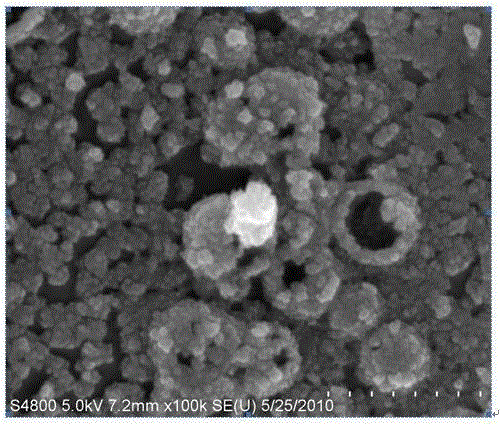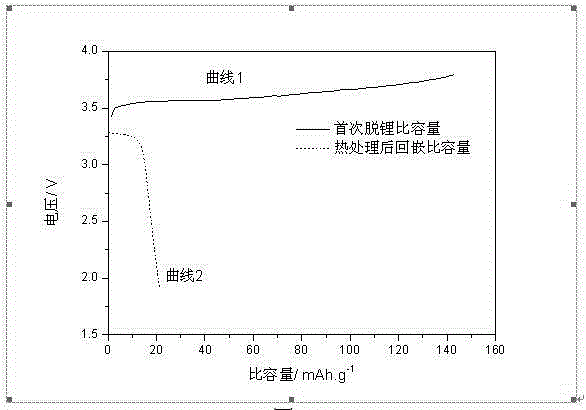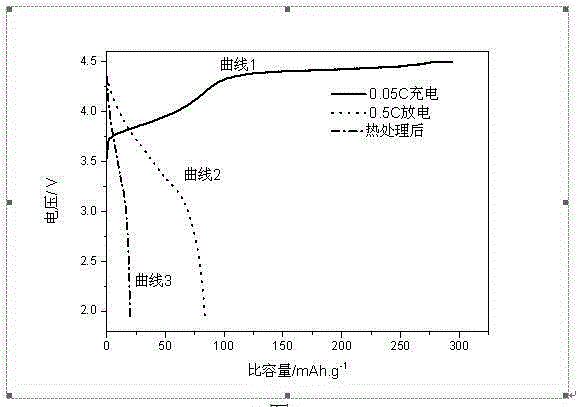Lithium ion batteries cathode material additive, preparation method thereof, and cathode material and lithium ion battery both containing same
A technology of lithium ion battery and positive electrode material, applied in the direction of lithium battery, battery electrode, positive electrode, etc., can solve problems such as affecting battery performance and stable existence of lithium supplementary materials
- Summary
- Abstract
- Description
- Claims
- Application Information
AI Technical Summary
Problems solved by technology
Method used
Image
Examples
preparation example Construction
[0033] The present invention also provides a method for preparing the positive electrode material additive of the lithium ion battery, and the method includes the following steps:
[0034] S1. Surface modification of inorganic lithium salt with silane coupling agent to obtain silane coupling agent-modified inorganic lithium salt;
[0035] S2. Mix the inorganic lithium salt modified by the silane coupling agent, the low melting point polymer and the volatile organic solvent in step S1, and heat until the organic solvent is completely volatilized, so that the low melting point polymer is coated on the surface of the inorganic lithium salt and dried Then a composite material with a core-shell structure is obtained.
[0036] According to the method for preparing lithium ion battery positive electrode material additives according to the present invention, preferably, the step S1 includes adding inorganic lithium salt to an aqueous ethanol solution, heating, and then adding a mixture of si...
Embodiment 1
[0075] (1) Prepare the silane coupling agent solution according to the ratio of 20% silane coupling agent KH550, 72% ethanol and 8% water.
[0076] (2) Take 50g LiFePO 4 Add the ethanol aqueous solution and heat to 60°C to obtain a mixed solution.
[0077] (3) Add 15 ml of the silane coupling agent solution in step (1) slowly to the mixed solution in step (2), and stir at 200 rad / min until the solvent is completely volatilized. Place the remaining materials in a vacuum drying oven at 150°C for drying. After drying, they are soaked in ethanol, washed and centrifuged to obtain LiFePO modified with silane coupling agent. 4 .
[0078] (4) Add 100ml of decahydronaphthalene to a 500ml three-necked round bottom flask, heat to 100°C, and stir at 200rad / min. While stirring, add 10g of low-density polyethylene, and continue stirring until the polyethylene is completely dissolved.
[0079] (5) Add 50g of LiFePO surface-modified by silane coupling agent in step (3) to the mixed solution of step (...
Embodiment 2
[0081] According to the same treatment method in Example 1, the difference is that LiNi is used in step (2) 0.8 Co 0.15 Al 0.05 O 2 Instead of LiFePO 4 , The positive electrode material additive A2 of lithium ion battery was prepared.
PUM
| Property | Measurement | Unit |
|---|---|---|
| particle size | aaaaa | aaaaa |
| particle size | aaaaa | aaaaa |
| thickness | aaaaa | aaaaa |
Abstract
Description
Claims
Application Information
 Login to View More
Login to View More - R&D
- Intellectual Property
- Life Sciences
- Materials
- Tech Scout
- Unparalleled Data Quality
- Higher Quality Content
- 60% Fewer Hallucinations
Browse by: Latest US Patents, China's latest patents, Technical Efficacy Thesaurus, Application Domain, Technology Topic, Popular Technical Reports.
© 2025 PatSnap. All rights reserved.Legal|Privacy policy|Modern Slavery Act Transparency Statement|Sitemap|About US| Contact US: help@patsnap.com



